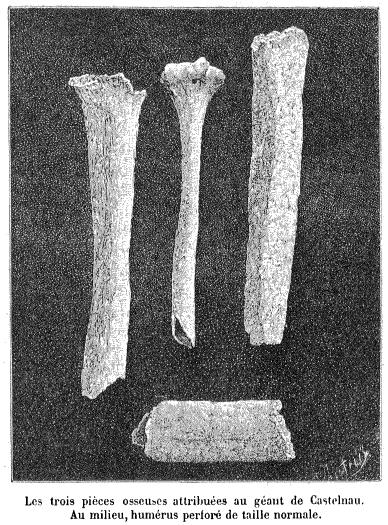Many newspaper clippings can be found from the 19th century, and trickling on into the 20th century, reporting on the discovery of full skeletons or bones that indicate a race of giant humanoids.
For example, on Dec. 19, 1897, the New York Times reported from Maple Creek, Wis.: “One of the three recently discovered mounds in this town has been opened. In it was found the skeleton of a man of gigantic size. The bones measured from head to foot over 9 feet and were in a fair state of preservation. The skull was as large as a half bushel measure. Some finely tempered rods of copper and other relics were lying near the bones.”
On May 3, 1912, the New York Times reported from Madison, Wis.: “Upon opening one large mound at Lake Lawn farm, 18 skeletons were discovered by the Phillips Brothers. The heads, presumably those of men, are much larger than the heads of any race which inhabit America today.”
It isn’t only Wisconsin that seemed a hotbed of giant-bone discovery. Ohio had many such reports from this time period, and large bones attributed to giants have been found up into Eastern Canada. Giant bones have allegedly been found all over the world.
In August 1890, The Popular Science News and Boston Journal of Chemistry reported a finding by anthropologist Georges Vacher de Lapouge at the Bronze Age cemetery of Castelnau-le-Lez, France. Lapouge had found unusually large human humerus bones. The journal wrote: “If we judge of the height of this neolithic giant by the usual proportion of the parts of the skeleton to each other, he must have been between 10 and 11 feet high. The question remains whether this excessive growth was a normal one, or due to a diseased condition … On this point the authorities differ, one professor of the University of Montpellier holding that the bones are normal in every respect, while another finds evidence of a diseased condition.”
MORE: Did Giants Exist? Part 1: Legends and America’s Giant Skeletons






